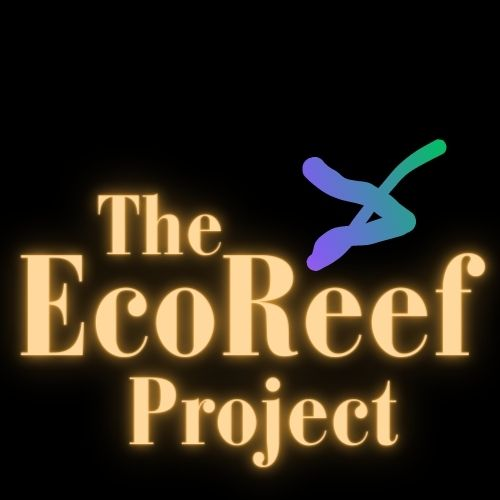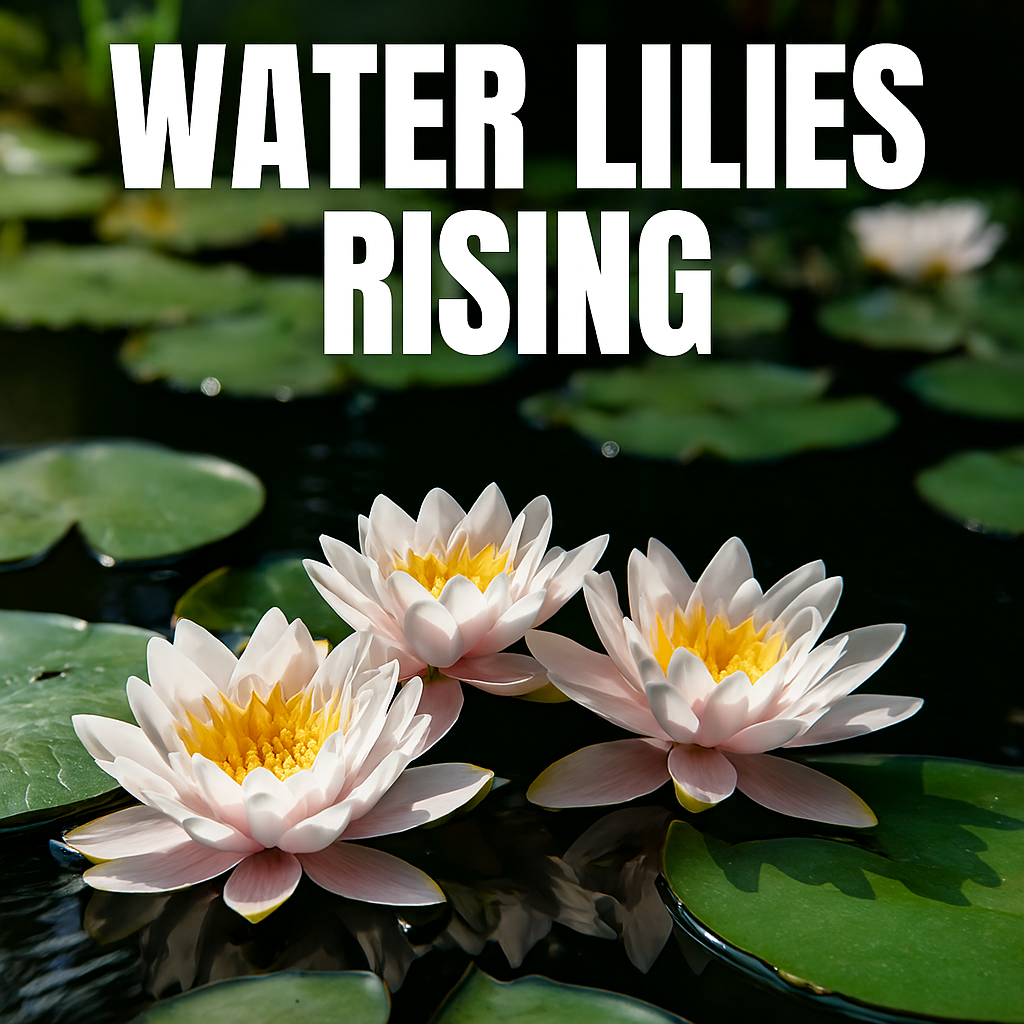What Makes Water Safe Or Unsafe
What Makes Water Safe – The Anatomy of Water and the Fragility of Life
Water is the foundation of all biological life. Every animal, from the smallest insect to the largest mammal, depends on clean water to survive. Clean water supports hydration, digestion, cellular function, and temperature regulation. It also plays a role in reproduction, movement, and immune defense. When water becomes contaminated, these life-sustaining functions are disrupted. Dirty water can carry pathogens, toxins, and harmful chemicals. It can lead to disease, organ failure, and death.
Understanding what makes water clean or dirty is essential for ecological health. Clean water is not just clear—it is chemically balanced and biologically safe. Dirty water may appear clean but contain invisible dangers. Animals rely on instinct and biology to detect water quality. However, human activity often masks these signals. Pollution, runoff, and industrial waste alter water chemistry. Natural sources can also become contaminated through decay or stagnation. Clean water is a shared resource and a fragile one. It must be protected through knowledge and stewardship.

Defining Clean Water for All Species
Clean water is free from harmful contaminants. It contains balanced levels of oxygen, minerals, and nutrients. It supports hydration without causing harm. It is free from pathogens like bacteria, viruses, and parasites. It does not contain heavy metals or industrial chemicals. Clean water has a neutral pH, typically between 6.5 and 8.5. It is low in turbidity, meaning it is not clouded by particles. It is free from foul odors and unnatural colors. It supports aquatic life without stress or disease. It does not cause skin irritation or digestive issues. Clean water is safe for drinking, bathing, and reproduction.
It supports microbial balance and nutrient cycling. It does not promote harmful algal blooms. It is free from radioactive particles and synthetic compounds. It does not contain excess nitrogen or phosphorus. It supports biodiversity and ecological stability. It is naturally filtered through soil, sand, or vegetation. It is replenished by rainfall and protected by healthy watersheds. Clean water is a biological necessity and an ecological achievement.
Clean vs. Dirty Water
Biological Impact of Clean vs. Dirty Water
| Indicator | Clean Water | Dirty Water |
|---|---|---|
| Animal Behavior | Calm, exploratory, reproductive | Avoidant, stressed, erratic |
| Skin and Fur Response | No irritation or residue | Rashes, lesions, sticky coating |
| Digestive Safety | Supports hydration and metabolism | Causes vomiting, diarrhea, illness |
| Reproductive Health | Fertile, successful spawning | Infertility, deformities, egg death |
| Microbial Balance | Beneficial bacteria thrive | Harmful microbes dominate |
Chemical Composition and Water Safety
Clean water contains essential minerals in safe concentrations. These include calcium, magnesium, potassium, and sodium. It also contains dissolved oxygen for aquatic respiration. It has low levels of nitrates and phosphates. It is free from lead, mercury, arsenic, and cadmium. It does not contain synthetic pesticides or herbicides. It is free from industrial solvents and petroleum byproducts. Its pH is stable and within biological tolerance. It does not contain chlorine or chloramine in harmful amounts.
It is low in total dissolved solids. It does not contain volatile organic compounds. It is free from pharmaceutical residues. It does not contain microplastics or nanomaterials. It is not radioactive or corrosive. It supports enzymatic and cellular function. It does not interfere with metabolism or reproduction. It is chemically inert and biologically compatible. Clean water is a chemical equilibrium. Dirty water is a chemical hazard.
Chemical Comparison – Clean vs. Dirty Water
| Chemical Element | Clean Water | Dirty Water |
|---|---|---|
| pH Level | Neutral (6.5–8.5) | Acidic or alkaline extremes |
| Heavy Metals | Absent or trace levels | Elevated lead, mercury, arsenic |
| Nitrates and Phosphates | Balanced for plant life | Excessive, causes algal blooms |
| Dissolved Oxygen | High, supports aquatic respiration | Low, suffocates aquatic species |
| Synthetic Compounds | None | Pesticides, solvents, pharmaceuticals |
Physical Qualities and Sensory Clues
Clean water is clear and colorless. It has no visible particles or floating debris. It is free from foam, oil, or scum. It does not smell of sulfur, chlorine, or decay. It is cool and refreshing to the touch. It flows naturally and does not stagnate. It reflects light without distortion. It supports aquatic visibility and navigation. It does not stain or corrode surfaces. It does not leave residue on skin or fur. It does not cause irritation or inflammation. It does not promote fungal growth. It supports natural sedimentation and filtration.
It does not clog gills or pores. It maintains consistent temperature and flow. It does not fluctuate wildly in density or salinity. It supports natural evaporation and condensation. It does not foam or bubble unnaturally. Clean water is physically stable and visually trustworthy.
Sensory Profile – Clean vs. Dirty Water
| Sensory Attribute | Clean Water | Dirty Water |
|---|---|---|
| Color | Clear or slightly blue-green | Brown, yellow, or murky |
| Odor | Neutral or fresh | Rotten, chemical, or metallic |
| Texture | Smooth, non-irritating | Sticky, oily, or gritty |
| Visibility | High clarity | Clouded or opaque |
| Surface Behavior | Calm, natural ripples | Foam, scum, or unnatural bubbles |
Causes of Water Contamination
Water becomes dirty through both natural and human-driven processes. Industrial waste introduces heavy metals and synthetic chemicals. Agricultural runoff adds pesticides, herbicides, and excess nutrients. Urban stormwater carries oil, trash, and sewage. Mining operations release arsenic and sulfur compounds. Landfills leach toxins into groundwater. Plastic waste breaks down into microplastics.
Pharmaceuticals enter waterways through disposal and excretion. Untreated sewage introduces pathogens and organic overload. Deforestation increases sediment and erosion. Climate change alters rainfall and water cycles. Algal blooms deplete oxygen and release toxins. Stagnation promotes bacterial growth. Animal waste contaminates rural water sources. Saltwater intrusion affects coastal aquifers. Acid rain lowers pH and damages aquatic life. Oil spills suffocate marine ecosystems. Thermal pollution disrupts temperature balance. Radioactive waste contaminates long-term water supplies. Contamination is cumulative and often invisible. Prevention requires systemic ecological stewardship.
Contamination Sources – Natural vs. Human-Made
| Source Type | Natural Contaminants | Human-Made Contaminants |
|---|---|---|
| Geological | Arsenic, iron, sulfur | Mining runoff, radioactive waste |
| Biological | Animal waste, decaying matter | Untreated sewage, pharmaceuticals |
| Atmospheric | Acid rain, volcanic ash | Industrial emissions, smog |
| Hydrological | Stagnation, flooding | Dam disruption, thermal discharge |
| Surface Activity | Erosion, sediment | Plastic waste, oil spills |
Biological Life And Hydration
Ecological Consequences of Dirty Water
Contaminated water disrupts entire ecosystems. Fish populations decline due to oxygen loss. Amphibians suffer deformities and reproductive failure. Birds ingest toxins through aquatic prey. Insects lose breeding grounds and food sources. Plants absorb pollutants and become toxic. Microbial balance collapses, promoting disease. Coral reefs bleach and die from chemical exposure. Wetlands lose filtration capacity. Rivers become biologically dead zones. Lakes turn into algal-dominated basins. Forests lose hydration and soil stability. Polluted water travels downstream, affecting distant habitats.
Biodiversity shrinks as species disappear. Food chains collapse from bottom to top. Migratory patterns shift due to water scarcity. Invasive species thrive in degraded conditions. Restoration becomes costly and slow. Ecosystem services vanish, including filtration and flood control. Dirty water is not isolated—it spreads ecological harm. Clean water is the foundation of ecological resilience.
Ecosystem Health – Clean vs. Dirty Water
| Ecological Indicator | Clean Water | Dirty Water |
|---|---|---|
| Fish Populations | Stable, diverse, reproductive | Declining, diseased, stressed |
| Amphibian Health | Normal development, viable eggs | Deformities, reproductive failure |
| Bird Interaction | Safe bathing and feeding | Toxin ingestion, behavioral change |
| Plant Function | Nutrient cycling, oxygen production | Toxic uptake, decay |
| Microbial Balance | Symbiotic, beneficial | Pathogenic, imbalanced |
Filtration and Natural Water Cleansing
Nature filters water through physical, chemical, and biological processes. Soil absorbs and traps particles. Sand and gravel remove sediment and pathogens. Wetlands act as biological filters. Plants absorb excess nutrients and toxins. Microbes break down organic matter. Aquifers purify water over time. Forests regulate runoff and erosion. Rivers oxygenate water through flow and turbulence. Sunlight disinfects surface water. Evaporation leaves contaminants behind. Rainfall dilutes and renews water sources.
Natural filtration is slow but effective. It requires intact ecosystems and biodiversity. Human filtration mimics these processes. Activated carbon removes chemicals. Reverse osmosis filters out salts and metals. UV treatment kills pathogens. Chlorination disinfects but alters chemistry. Filtration is essential for water safety. It restores balance and removes threats. Clean water is often the result of layered filtration. Dirty water overwhelms or bypasses these systems.
Filtration Methods – Natural vs. Engineered
| Filtration Type | Natural Mechanism | Human-Made Mechanism |
|---|---|---|
| Physical | Soil, sand, gravel | Mesh filters, sediment traps |
| Chemical | Plant absorption, mineral binding | Activated carbon, ion exchange |
| Biological | Microbial breakdown, root uptake | Biofilters, UV sterilization |
| Hydrological | Flow, turbulence, evaporation | Reverse osmosis, distillation |
| Atmospheric | Rainfall, condensation | Dehumidifiers, air-to-water systems |
Animal Responses to Water Quality
Animals instinctively react to water purity. Fish avoid contaminated zones and show erratic movement. Amphibians abandon breeding sites. Mammals refuse to drink or show signs of illness. Birds change migration paths or feeding behavior. Insects fail to reproduce in toxic water. Reptiles develop skin lesions and digestive issues. Aquatic mammals suffer damage and failure. Behavioral changes signal ecological distress. Clean water supports normal activity and reproduction.
Dirty water causes avoidance, aggression, and lethargy. Animals rely on sensory cues—taste, smell, and texture. Contaminants disrupt these cues. Some species adapt temporarily but suffer long-term harm. Water quality affects social behavior and group dynamics. Predation patterns shift due to habitat loss. Nesting and feeding routines collapse. Animal health reflects water health. Monitoring behavior reveals contamination. Clean water restores natural rhythms and instincts.
Restoration Strategies for Contaminated Water
Restoring dirty water requires layered intervention. Physical filtration removes sediment and debris. Chemical treatment neutralizes toxins and heavy metals. Biological restoration reintroduces beneficial microbes. Wetland construction filters runoff naturally. Riparian buffers reduce erosion and nutrient overload. Reforestation stabilizes watersheds. Sediment traps prevent downstream contamination. Floating wetlands absorb excess nutrients. Aeration restores oxygen levels.
Bioremediation uses plants and bacteria to detoxify water. Solar disinfection kills pathogens with UV rays. Rain gardens capture and filter urban runoff. Green infrastructure reduces stormwater pollution. Community cleanups remove trash and plastics. Policy enforcement limits industrial discharge. Education promotes responsible water use. Restoration is ongoing and adaptive. It requires monitoring and ecological feedback. Clean water is not a final state—it is a maintained balance. Restoration is both technical and symbolic.
Restoration Tools – Passive vs. Active Methods
| Restoration Type | Passive Method | Active Method |
|---|---|---|
| Physical | Gravel beds, sediment ponds | Mesh filters, dredging |
| Chemical | Natural mineral binding | Chlorination, activated carbon |
| Biological | Wetlands, root zones | Microbial inoculation, bioreactors |
| Structural | Riparian buffers, rain gardens | Aerators, UV sterilizers |
| Social | Education, conservation zones | Policy enforcement, cleanup teams |
Water Testing and Monitoring
Testing water quality reveals invisible threats. pH tests measure acidity and alkalinity. Turbidity tests assess clarity and particle load. Dissolved oxygen tests gauge aquatic viability. Nitrate and phosphate tests detect nutrient overload. Heavy metal tests identify toxic elements. Bacterial tests reveal pathogens like E. coli. Salinity tests measure salt concentration. Temperature readings affect biological function.
Conductivity tests show ion presence. Chemical oxygen demand tests reveal organic pollution. Biological indicators include fish health and insect diversity. Regular testing prevents ecological collapse. Monitoring tracks seasonal and human impacts. Portable kits support field testing. Lab analysis offers precision and depth. Remote sensors provide real-time data. Citizen science expands coverage and awareness. Data informs restoration and policy. Testing is not optional—it is foundational. Clean water is verified through evidence.
Water Testing Indicators – What to Measure and Why
| Indicator Type | What It Measures | Why It Matters |
|---|---|---|
| pH Level | Acidity or alkalinity | Affects biological compatibility |
| Turbidity | Particle concentration | Impacts visibility and respiration |
| Dissolved Oxygen | Oxygen availability | Supports aquatic life |
| Nitrates and Phosphates | Nutrient levels | Triggers algal blooms |
| Pathogen Presence | Bacteria and viruses | Causes disease and contamination |
Symbolic Meaning of Clean Water
Clean water is more than a resource—it is a symbol of life. It represents renewal, clarity, and balance. It reflects ecological health and social equity. It connects species across ecosystems. It anchors cultural rituals and spiritual practices. It embodies transparency and truth. It signals safety and trust. It supports growth and transformation. It mirrors the sky and nourishes the earth. It flows through stories and histories. It is a metaphor for healing and restoration. Dirty water symbolizes neglect and imbalance.
It reflects pollution and decay. It warns of systemic failure. It obscures vision and disrupts life. It carries the weight of human impact. Clean water restores dignity to landscapes. It invites reflection and responsibility. It teaches interdependence and care. It is both literal and poetic. Water is the language of ecosystems.
Symbolic Contrast – Clean vs. Dirty Water
| Symbolic Attribute | Clean Water | Dirty Water |
|---|---|---|
| Emotional Resonance | Peace, clarity, renewal | Anxiety, decay, disruption |
| Cultural Meaning | Ritual, purity, life | Warning, taboo, loss |
| Ecological Message | Balance, resilience, health | Collapse, stress, contamination |
| Visual Metaphor | Transparency, flow | Obstruction, stagnation |
| Ethical Implication | Stewardship, care | Neglect, exploitation |
Ecological Stewardship and Water Ethics
Protecting water is an ethical act. It reflects care for all living beings. Stewardship begins with awareness and action. It includes conservation, restoration, and education. It requires policy and personal responsibility. Ethical water use avoids waste and pollution. It respects downstream and future impacts. It honors indigenous knowledge and local ecosystems. Stewardship is not passive—it is participatory.
It involves monitoring and advocacy. It supports biodiversity and resilience. It challenges industrial and agricultural excess. It promotes circular systems and reuse. It values water as sacred and shared. Ethics guide infrastructure and innovation. They shape community and governance. Stewardship is a daily practice. It is rooted in humility and science. Clean water is a reflection of ethical systems. Dirty water reveals ethical failure.
Global Patterns of Water Contamination
Water contamination is a global crisis. In developing regions, lack of infrastructure leads to widespread disease. In industrialized nations, chemical runoff and pharmaceuticals pollute rivers. Agricultural zones suffer from nitrate overload. Urban centers face stormwater and sewage overflow. Coastal areas experience saltwater intrusion. Mining regions release heavy metals into groundwater. Climate change intensifies droughts and floods. Melting glaciers alter freshwater availability. Deforestation disrupts watershed stability. Plastic pollution affects oceans and lakes. Oil spills devastate marine ecosystems.
Industrial zones discharge toxins into rivers. Poor waste management contaminates aquifers. Overpopulation strains water resources. Political instability hinders water governance. Global trade spreads contaminants across borders. International cooperation is essential for restoration. Water contamination reflects systemic inequality. Clean water access is a human right. Global patterns reveal shared responsibility.
Climate Impacts on Water Quality
Climate change reshapes water purity. Rising temperatures reduce dissolved oxygen. Droughts concentrate pollutants in stagnant water. Floods spread contaminants across landscapes. Melting ice releases trapped toxins. Sea level rise affects freshwater aquifers. Extreme weather disrupts filtration systems. Wildfires introduce ash and chemicals into streams. Shifting rainfall patterns alter water cycles. Heat promotes algal blooms and bacterial growth. Climate stress weakens aquatic ecosystems. Species lose resilience and adaptability. Waterborne diseases increase with warming. Infrastructure struggles to keep pace. Climate impacts are cumulative and unpredictable. Restoration must be climate-adaptive. Monitoring must include temperature and flow changes. Policy must integrate climate science. Clean water depends on climate stability. Dirty water reflects climate disruption. Water and climate are inseparable systems.
Species-Specific Water Needs
Different animals require different water conditions. Fish need oxygen-rich, low-turbidity environments. Amphibians require clean, shallow breeding zones. Mammals need pathogen-free drinking sources. Birds rely on clean water for bathing and feeding. Insects breed in balanced aquatic microhabitats. Reptiles need stable temperature and mineral content. Aquatic mammals require toxin-free, flowing water. Each species has unique tolerance thresholds. pH, temperature, and salinity vary by species. Contamination affects species differently. Some are highly sensitive to pollutants. Others adapt but suffer long-term harm. Restoration must consider species diversity. Testing must reflect biological needs. Habitat design must support water compatibility. Conservation must protect species-specific water sources. Clean water supports biodiversity. Dirty water causes selective extinction. Species needs guide ecological stewardship.
Species Water Requirements – Sensitivity and Tolerance
| Animal Group | Water Requirement | Sensitivity to Contamination |
|---|---|---|
| Fish | High oxygen, low turbidity | Very high – immediate impact |
| Amphibians | Clean, shallow, pH-neutral | High – affects eggs and skin |
| Mammals | Pathogen-free, mineral-balanced | Moderate – digestive and organ risk |
| Birds | Clear, non-toxic, flowing | Moderate – ingestion and bathing |
| Insects | Balanced nutrients, low toxins | High – breeding disruption |
Conclusion – Water as a Mirror of Ecological Integrity
Water reflects the health of ecosystems. Clean water signals balance, resilience, and care. Dirty water reveals neglect, disruption, and decay. Every drop carries biological, chemical, and symbolic meaning. Animals respond instinctively to water quality. Humans must respond ethically and scientifically. Restoration is possible—but it requires commitment. Testing, filtration, and stewardship are essential. Clean water is not a luxury—it is a necessity. It supports biodiversity, health, and cultural continuity.
It flows through landscapes and stories. It connects species and generations. It teaches interdependence and humility. Dirty water warns us of systemic failure. It demands action and accountability. Clean water invites renewal and restoration. It is both a goal and a process. Let this guide be a blueprint for ecological care. Let every tank, stream, and watershed reflect dignity. Water is life—protect it with knowledge and intention.
Join the Discussion
What does clean water mean to you? Have you witnessed the impact of water contamination in your community or ecosystem?
#WaterStewardship #CleanWaterEthics #EcologicalRestoration #SymbolicEcology #WaterTestingMatters #AquaticIntegrity #ClimateAndWater #SpeciesWaterNeeds #ModularWaterWisdom #ProtectEveryDrop













Leave a Reply